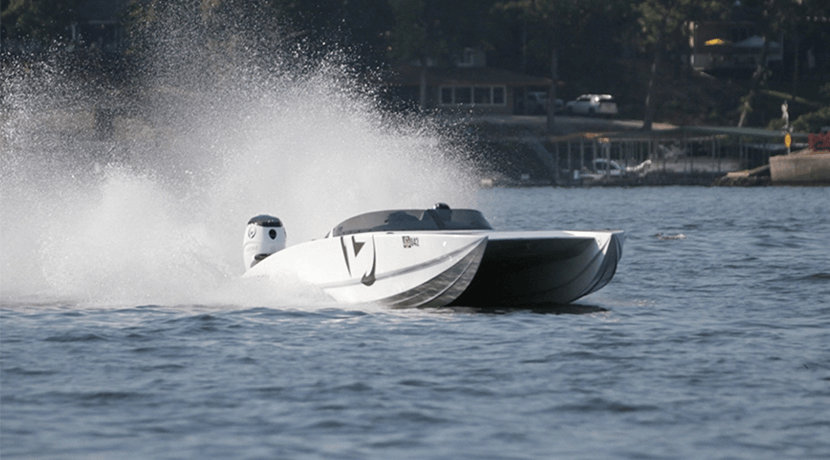When it comes to boating, safety should always be the top priority. Understanding what determines if a speed is safe for your boat is crucial for both experienced boaters and newcomers to the water.
What Determines If a Speed Is Safe for Your Boat?
At its core, the safety of a boat’s speed is determined by a combination of external factors and the boat’s own characteristics.
Let’s take a closer look at each of these factors to gain a better understanding.
External Factors That Affect Safe Boat Speeds
1. Weather Conditions
One of the primary external factors that determine the safety of your boat’s speed is the prevailing weather conditions.
Adverse weather conditions such as strong winds, heavy rain, or rough seas can significantly impact the safety of your boat.
It is essential to pay attention to weather forecasts and heed any warnings or advisories before setting out on the water.
2. Water Conditions
In addition to weather conditions, the state of the water itself can greatly influence the safe speed of your boat.
Factors such as tides, currents, and waves should be taken into consideration. It is crucial to be aware of any potential hazards in the water, such as submerged rocks or shallow areas, which can pose a risk when navigating at higher speeds.
3. Visibility
Good visibility is essential for safe boating. Impaired visibility due to fog, darkness, or other factors can make it difficult to spot other boats, buoys, or obstacles in the water.
It is important to adjust your speed accordingly to maintain a safe distance from other objects and ensure you have enough time to react and maneuver if needed.
4. Traffic and Navigation Rules
Boating in congested areas or busy waterways requires adherence to traffic and navigation rules.
Speed limits may be imposed in certain areas to ensure the safety of all boaters. It is essential to familiarize yourself with the local regulations and abide by the designated speed limits to avoid collisions and accidents.
5. Wildlife and Marine Life
The presence of wildlife and marine life in the water can impact the safe speed of your boat.
Collisions with marine animals can not only harm the animal but also pose a significant risk to the passengers and the boat itself.
Slowing down in areas known for wildlife activity or using designated wildlife corridors can help minimize these risks.
Boat Characteristics and Safety Considerations
6. Boat Size and Type
The size and type of your boat play a crucial role in determining its safe speed. Smaller boats, such as personal watercraft or dinghies, may have lower speed limits due to their design and stability.
Larger boats, on the other hand, may be able to handle higher speeds more safely. Understanding the capabilities and limitations of your boat is essential for responsible boating.
7. Stability and Handling
The stability and handling characteristics of a boat are important factors to consider when determining a safe speed.
Boats with good stability and maneuverability can handle higher speeds more effectively.
Factors such as weight distribution, hull design, and propulsion system all contribute to a boat’s stability and handling capabilities.
8. Load Capacity
The load capacity of your boat, including passengers and cargo, should be taken into account when determining a safe speed.
Overloading a boat can affect its stability and handling, making it less safe to operate at higher speeds.
Always adhere to the manufacturer’s recommendations regarding the maximum load capacity of your boat.
9. Power and Engine Performance
The power and performance of your boat’s engine are crucial factors in determining a safe speed.
It is important to operate within the recommended RPM range for your engine to ensure optimal performance and reduce the risk of mechanical failure.
Regular maintenance and inspections of the engine are also essential for safe boating.
Can I exceed the speed limit if the waterway is empty?
Even if a waterway appears to be empty, it is not advisable to exceed the speed limit.
Unexpected hazards or other boaters can still be present, and operating at high speeds can increase the risk of accidents. It is always best to follow the established speed limits for the safety of yourself and others.
What is the Legal Speed Limit for Boats?
When it comes to boating, different types of boats may have varying legal speed limits. These limits are typically set by local jurisdictions and may vary based on the type of boat and the specific waterway.
-
Personal Watercraft (PWC)
Personal watercraft, such as Jet Skis or WaveRunners, often have stricter speed limits due to their maneuverability and potential for high-speed operation.
In many areas, the speed limit for PWCs ranges from 25 to 35 miles per hour (40 to 56 kilometers per hour). However, it is essential to consult local regulations as speed limits may vary.
-
Motorboats
Motorboats encompass a wide range of vessels, including recreational powerboats and fishing boats. The speed limits for motorboats can differ based on factors such as the size of the boat, the type of waterway, and local regulations.
In general, speed limits for motorboats can range from 25 to 55 miles per hour (40 to 88 kilometers per hour).
-
Sailboats
Sailboats primarily rely on wind power for propulsion and typically have lower speed limits compared to motorized boats.
The speed limits for sailboats can vary depending on factors such as the size of the boat, local regulations, and the presence of other watercraft in the area.
It is advisable to operate sailboats at safe speeds, especially in congested waterways or areas with restricted visibility.
-
Pontoon Boats
Pontoon boats, known for their stability and leisurely cruising capabilities, often have speed limits ranging from 25 to 35 miles per hour (40 to 56 kilometers per hour).
However, it is important to note that speed limits for pontoon boats may be subject to local regulations and specific waterway restrictions.
-
Canoes and Kayaks
Canoes and kayaks, which are human-powered watercraft, generally do not have specific speed limits.
However, it is essential to operate these boats at a safe and responsible speed, taking into consideration factors such as water conditions, visibility, and the presence of other boaters.


